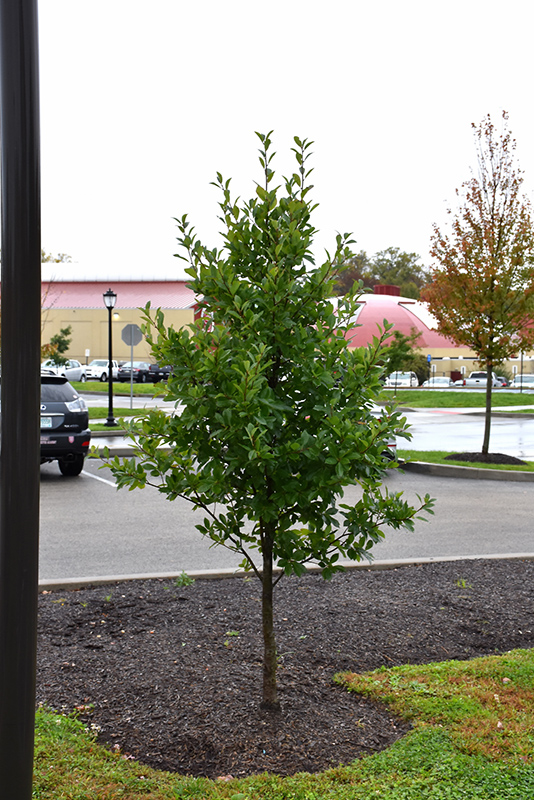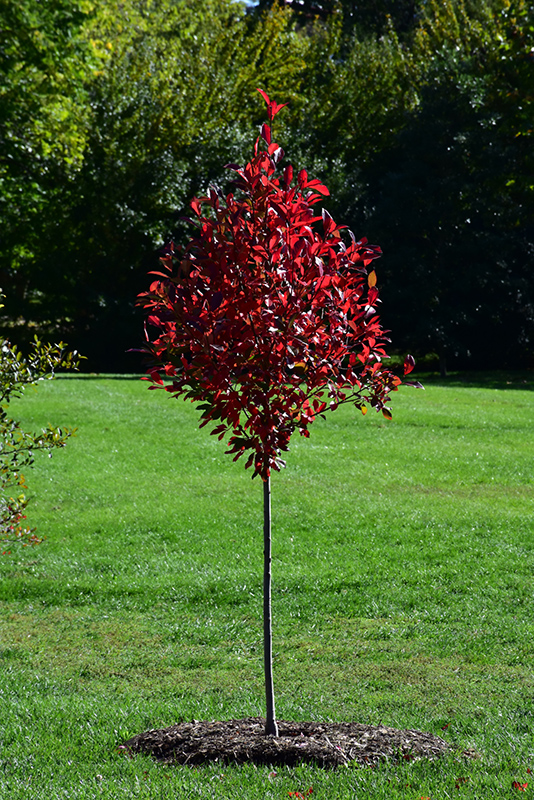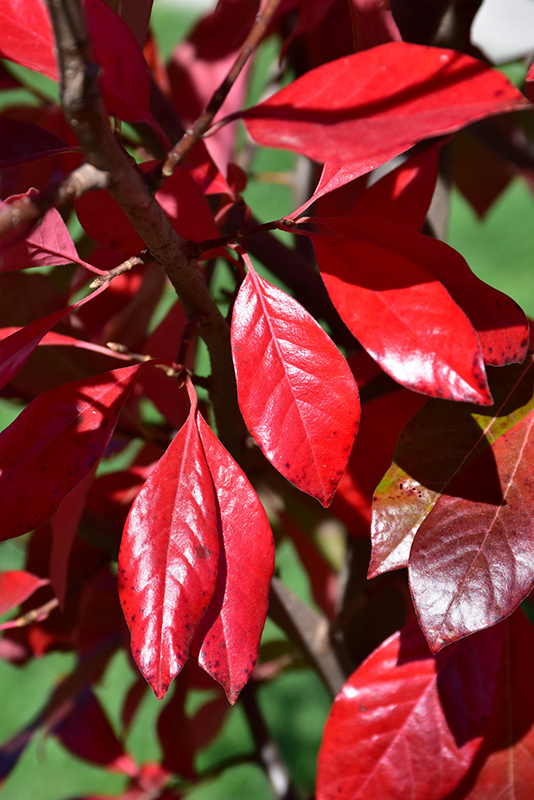Plant Finder
Green Gable Black Gum
Nyssa sylvatica 'NSUHH'
Height: 40 feet
Spread: 25 feet
Sunlight:
![]()
![]()
Hardiness Zone: 5
Other Names: Tupelo, Black Tupelo, Sour Gum, Pepperidge
Description:
A glorious native variety producing bold red new foliage that matures to a glossy dark green, then fiery scarlet in fall; consistent pyramidal habit with strong branching; needs moist, organic, acidic soils, intolerant of urban pollution
Ornamental Features
Green Gable Black Gum is primarily valued in the landscape for its distinctively pyramidal habit of growth. It has forest green deciduous foliage which emerges red in spring. The glossy pointy leaves turn an outstanding scarlet in the fall. The furrowed black bark adds an interesting dimension to the landscape.
Landscape Attributes
Green Gable Black Gum is a deciduous tree with a strong central leader and a distinctive and refined pyramidal form. Its average texture blends into the landscape, but can be balanced by one or two finer or coarser trees or shrubs for an effective composition.
This is a relatively low maintenance tree, and is best pruned in late winter once the threat of extreme cold has passed. It is a good choice for attracting birds to your yard. It has no significant negative characteristics.
Green Gable Black Gum is recommended for the following landscape applications;
- Accent
- Shade
- Vertical Accent
Planting & Growing
Green Gable Black Gum will grow to be about 40 feet tall at maturity, with a spread of 25 feet. It has a low canopy with a typical clearance of 3 feet from the ground, and should not be planted underneath power lines. It grows at a medium rate, and under ideal conditions can be expected to live for 70 years or more.
This tree does best in full sun to partial shade. It does best in average to evenly moist conditions, but will not tolerate standing water. It is very fussy about its soil conditions and must have rich, acidic soils to ensure success, and is subject to chlorosis (yellowing) of the foliage in alkaline soils. It is quite intolerant of urban pollution, therefore inner city or urban streetside plantings are best avoided, and will benefit from being planted in a relatively sheltered location. Consider applying a thick mulch around the root zone in winter to protect it in exposed locations or colder microclimates. This is a selection of a native North American species.
Disclaimer - Rutgers Landscape & Nursery Plant Finder is an online resource representing many of the varieties that we carry over the course of the season, and is intended for informational purposes only. Inventory varies seasonally, so we cannot guarantee that every plant will be in stock at all times - please contact Rutgers directly for current availability.



